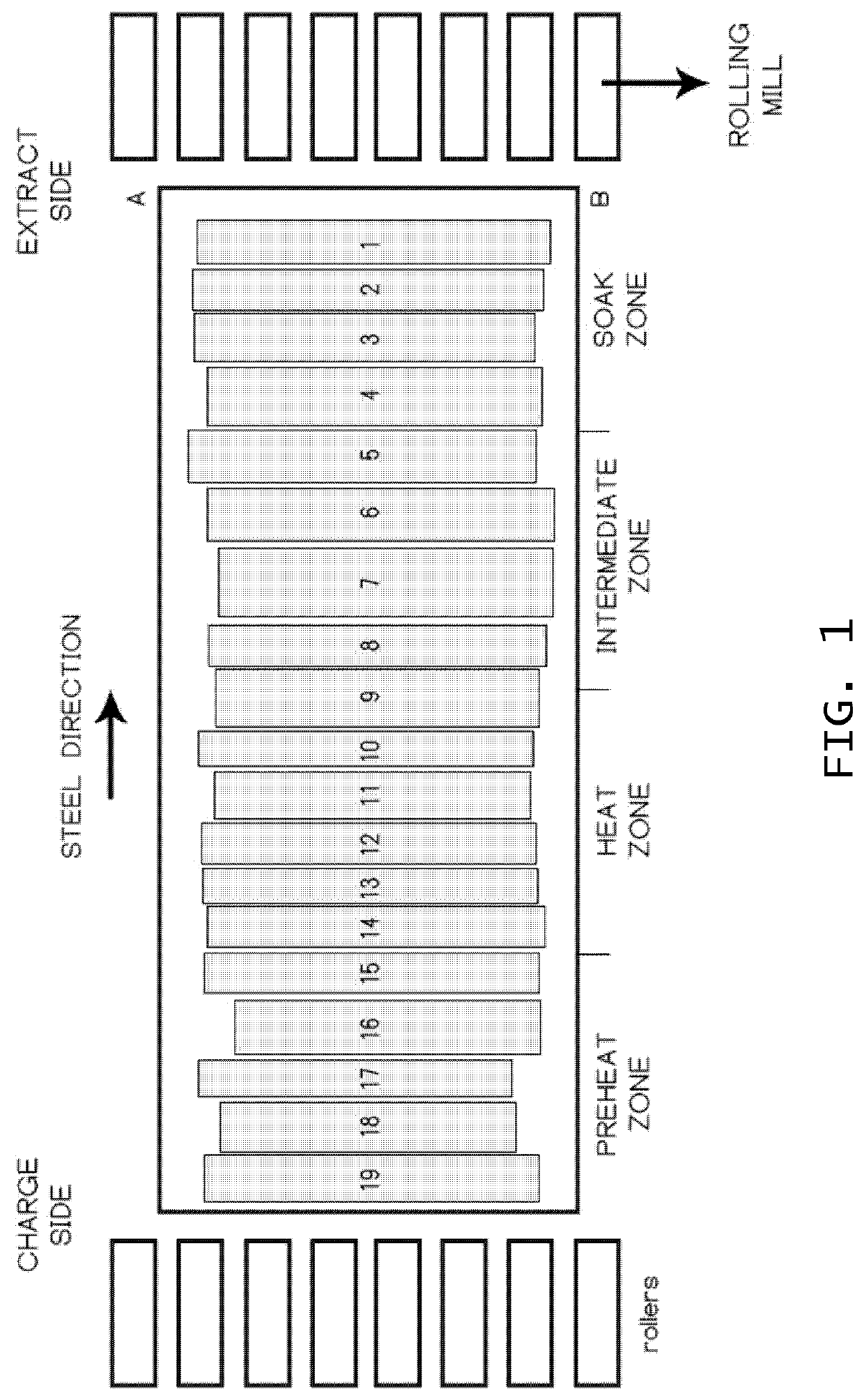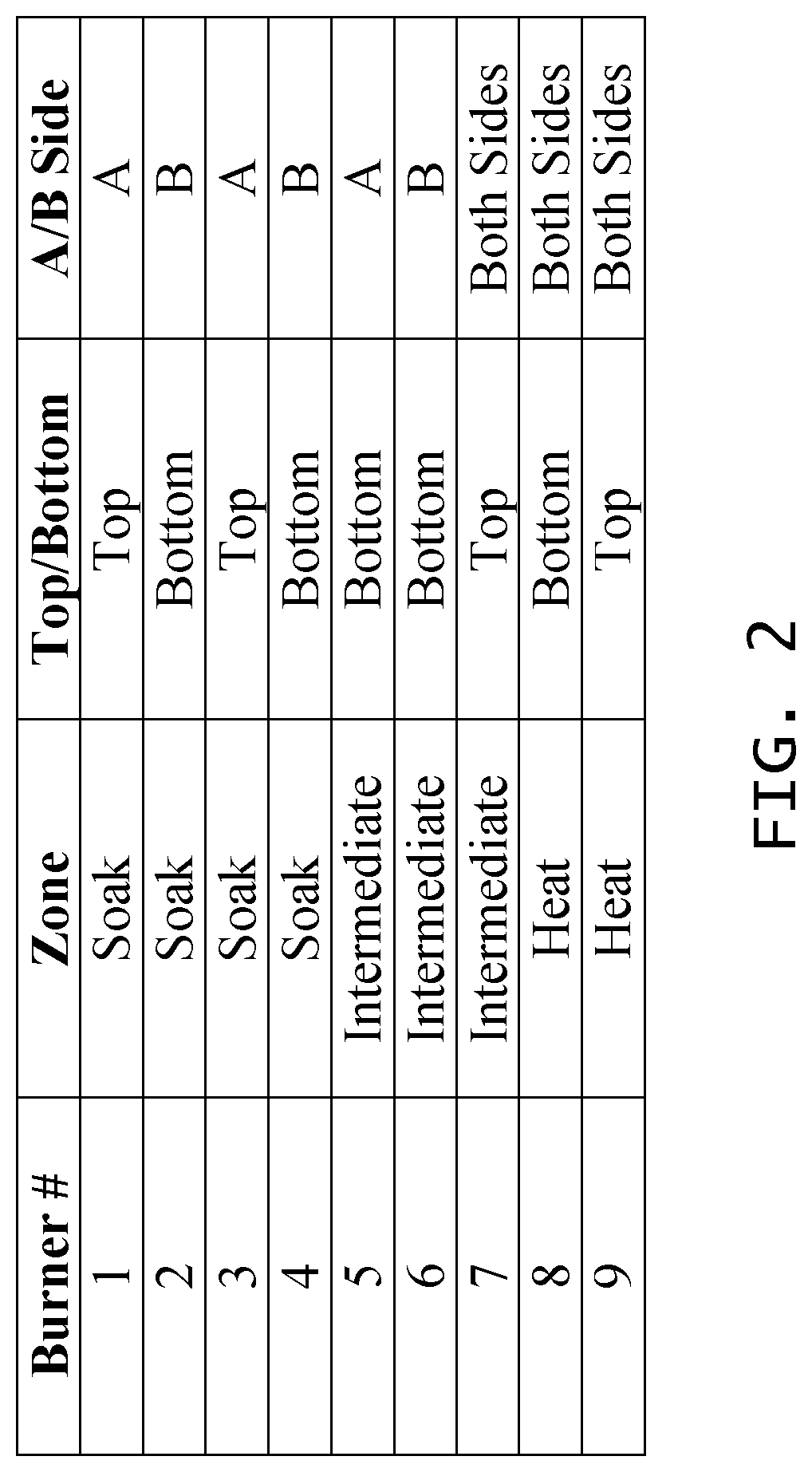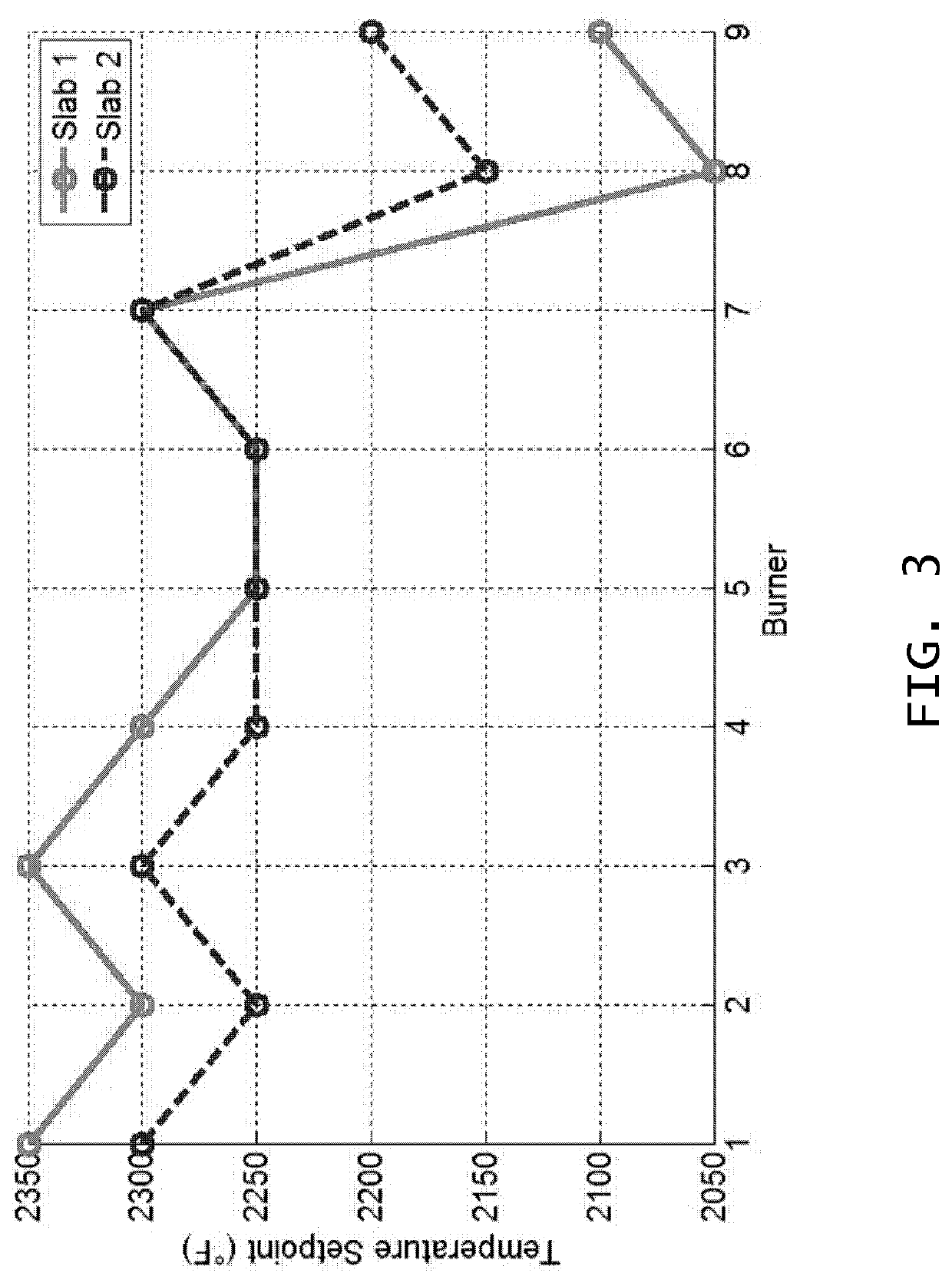System and method for dynamic process modeling, error correction and control of a reheat furnace
a dynamic process and reheat furnace technology, applied in the direction of furnaces, lighting and heating apparatus, control devices, etc., can solve the problems of increasing rolling power, reducing the efficiency of reheat furnaces, so as to achieve the effect of reducing fuel us
- Summary
- Abstract
- Description
- Claims
- Application Information
AI Technical Summary
Benefits of technology
Problems solved by technology
Method used
Image
Examples
Embodiment Construction
[0035]The present invention provides a system and method for controlling the temperature setpoints in a large scale steel reheat furnace such that a wide variety (even random) mixture of slabs with different compositions, sizes, initial temperatures, temperature requirements, and anticipated residence times are all discharged at an appropriate temperature with emphasis on ensuring that no slab is insufficiently heated per rolling and quality requirements. This is accomplished with minimized fuel use per ton of steel produced. The present invention combines this system with a graphical user interface where real-time configuration and programming changes can be made without interrupting the process or process control.
[0036]An example of a steel reheat furnace is shown in FIG. 1. The view is top down; slabs are charged at the left side, traverse rightward through the furnace, and are extracted at the right end, where they proceed on rollers to be milled. Such furnaces are divided into ...
PUM
 Login to View More
Login to View More Abstract
Description
Claims
Application Information
 Login to View More
Login to View More - R&D
- Intellectual Property
- Life Sciences
- Materials
- Tech Scout
- Unparalleled Data Quality
- Higher Quality Content
- 60% Fewer Hallucinations
Browse by: Latest US Patents, China's latest patents, Technical Efficacy Thesaurus, Application Domain, Technology Topic, Popular Technical Reports.
© 2025 PatSnap. All rights reserved.Legal|Privacy policy|Modern Slavery Act Transparency Statement|Sitemap|About US| Contact US: help@patsnap.com



